Review of charger Soshine SC-S1max V3
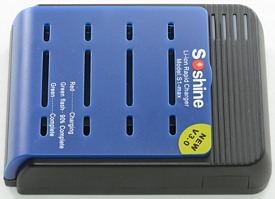
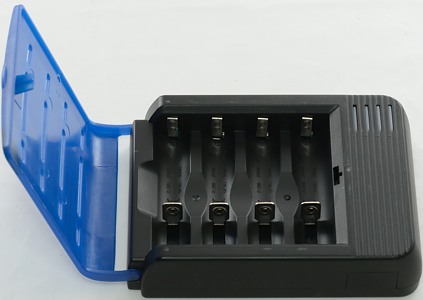
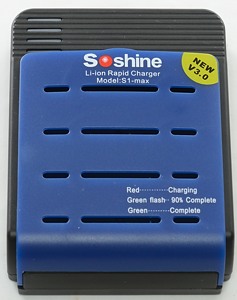
Soshine makes a couple of chargers and I have reviewed some before (S7,S2) they where acceptable but not perfect. This is revision 3 of a four channel charger, lets see if everything is perfect this time.
Note: The mix version of this charger is covered in another review.
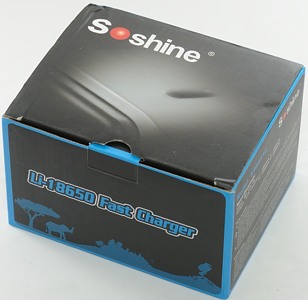
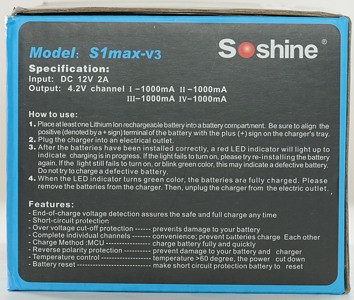
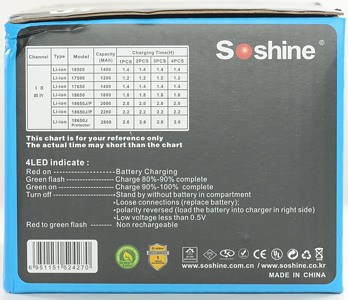
The charger arrives in a cardboard box, that does also work as manual.
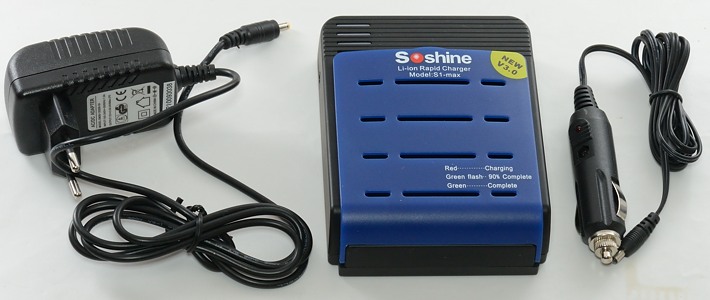
Actual contents is the charger, a universal power supply (100-240 VAC 50/60Hz) and a car power adapter.
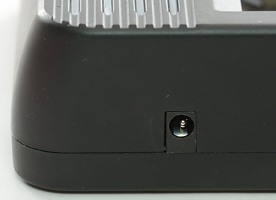
Power input on the charger is a small DC connector, it need 12 volt 1.8A according to the label on the bottom of the charger.
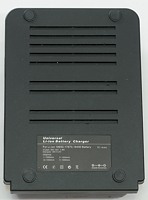
The bottom has the label and a lot of slots for air. The slots are not going to help much because the top of the charger does not have matching vents and when stuffed with batteries there is very little space around them (I did not notice any excess heating during tests).

The charger has 4 leds one for each channel, that can be either red or green.
- Red: Charging.
- Flashing green: nearly done charging.
- Green: Battery fully charged.
- Off: No battery, very low battery or reverse battery.
- Flashing red/green: Non rechargeable.
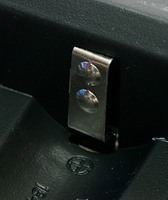
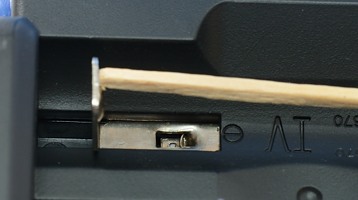
The connections are slightly raised, i.e. it can charge flat top batteries. The slider does slide smooth.
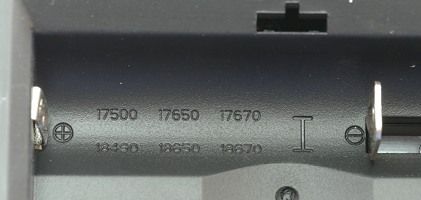
Each slot is clearly marked with polarity and supported battery sizes.


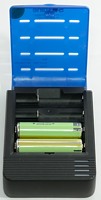
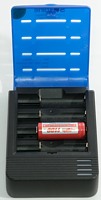
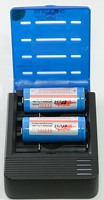
The charger is not rated for 26650 batteries, but it is possible to put one or two in the charger and charge them.
The charger can handle over 70 mm long batteries, including flat top cells.
Measurements
- Discharge battery with 3mA when power is disconnected.
- Discharge battery with 0.2mA when power is connected.
- Charge will restart if battery voltage drops to 3.9 volt.
- The charge will restart when a battery is inserted or power is cycled.
- Will flash green/red and charge with about 4mA below 1.6 bolt
- Between 1.6 volt and 3.2 volt it will show steady red light and charge with 0.46A
- Above 3.2 volt it will use CC/CV charge algorithm, see below.
- Charge termination current is about 100mA.
- The channels are independent and there is small variations between them.
.png)
Charging a 3400mAh battery takes about 4½ hours. At 225 minutes (Where the green current line gets thick), the charger starts flashing green, i.e. signally that the charger is nearly finished. This feature is very useful when short on time, as can be seen on the blue mAh curve there is very little capacity gain during the next 30 to 60 minutes, before the battery is full. I.e. removing the battery when the green led flashes will give nearly full capacity, but save 30 to 60 minutes in charging time.
.png)
.png)
.png)
The other 3 channels looks nearly equal to the first channel.
.png)
Charging on all four channels at the same time, does not reduce the charge current, i.e. it will charge four batteries just as fast as one battery.
There is more noise in the charge current, showing that the internal regulator is working much harder.
.png)
A 3100mAh battery is slightly faster to charge.
.png)
Going down to 2600mAh reduces the charge time to 3½ hour.
.png)
The charger does also handle my old IMR cell, without any problem.
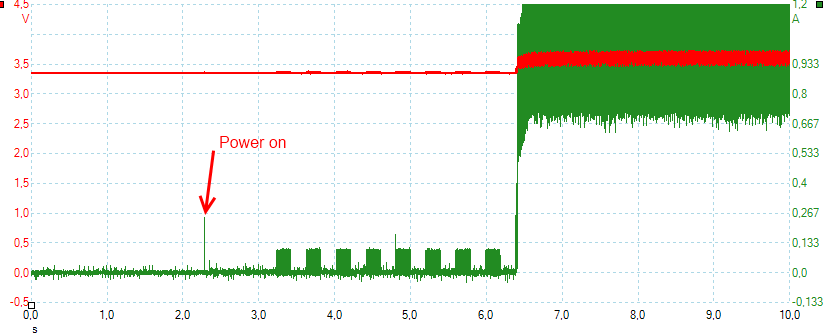
This charger does not use softstart, but goes to full charge current shortly after power is connected.
Testing the mains transformer with 2500 volt and 5000 volt between mains and low volt side, did not show any safety problems.
Conclusion
This charger is not a charger with a lot of smart features, but for charging up to four 18650 batteries it does a very good job and the "nearly finished" indication on the leds is nice. For people that need to charge many 18650 it is a good solution.
Notes
Here is an explanation on how I did the above charge curves: How do I test a charger


















.png)
.png)
.png)
.png)
.png)
.png)
.png)
.png)
